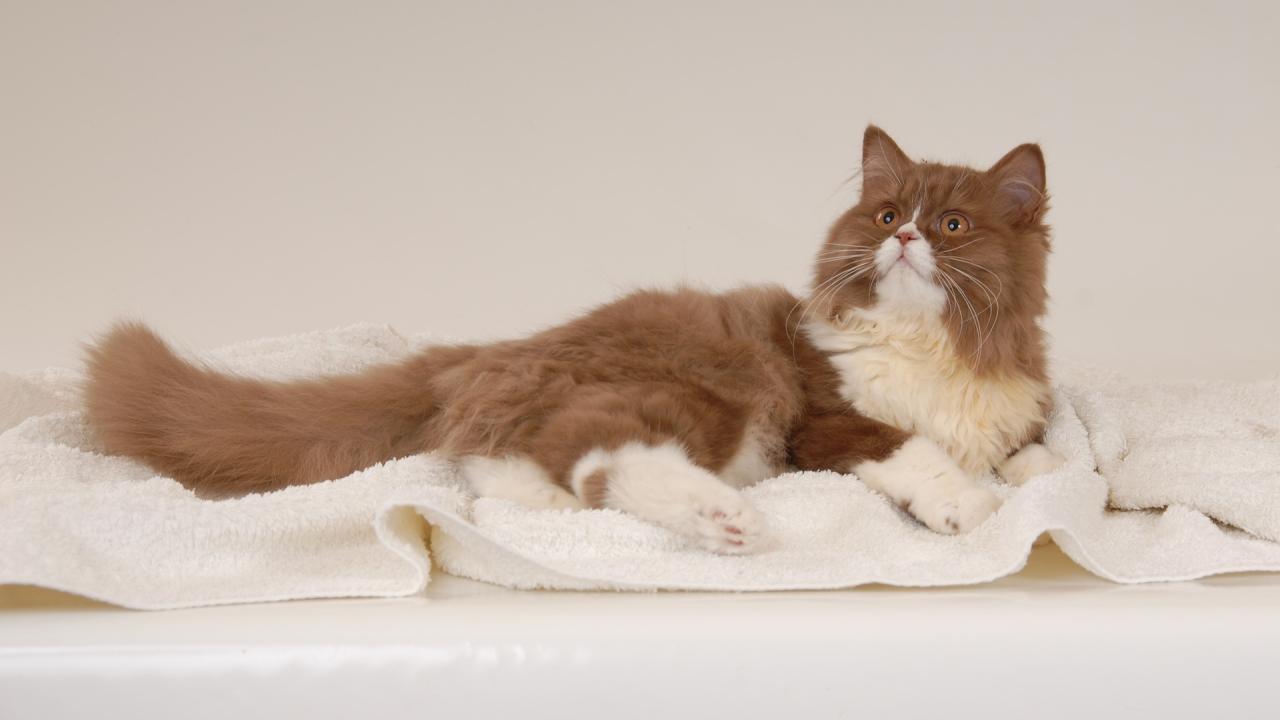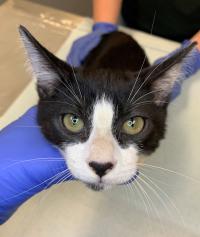
Ringworm in Cats (Dermatophytosis)
What is ringworm?
Takeaways
- Ringworm is a contagious fungal infection of the skin and hair.
- The most common dermatophyte in cats is Microsporum canis
- Ringworm results in patchy hair loss that can be in a circular pattern.
- Ringworm is zoonotic which means it can cause infection in people, as well as being contagious to other animals.
- Ringworm often resolves on its own within a few months, but topical and oral treatments may heal the infection more quickly and minimize risk of spread to other animals and people.
Ringworm, or dermatophytosis, is a highly contagious infection of the skin, hair, and nails. Despite its name, ringworm is actually a fungus (Microsporum spp. and Trichophyton spp). It is zoonotic and can be spread to humans and cause skin lesions. Transmission occurs through direct contact with the fungus. This can occur through direct contact of an open area of skin (scrape, cut, scratch) with an infected animal or person, soil, or any contaminated surface (carpet, bedding, brushes, etc.).
Ringworm can affect animals of any age, but young (less than one year old) and geriatric animals are at higher risk of infection. Immunocompromised cats and those with certain pre-existing conditions, such as flea allergies or external parasites, are also at increased risk of infection.
These fungal organisms are particularly durable and can persist on surfaces in the environment for long periods, potentially years. Dermatophytes can be easily spread by grooming equipment, toys, bedding, or by people on clothing or hands. The incubation period for ringworm ranges from four days to four weeks.
What are the clinical signs of ringworm?
The clinical signs of ringworm in cats can vary, but usually include circular patches of hair loss, dull, broken hair, scaly and/or inflamed skin, and changes in skin or hair color. It commonly causes skin lesions on the face, ears, feet, and tail.
Affected cats may groom or scratch excessively. The nails may become affected in some cases, which can lead to distortion as the nails grow. Raised, nodular skin lesions can occur in more severe cases.
Some cats, particularly longhaired breeds, can be asymptomatic carriers, meaning that they have infected hairs and are contagious to other animals, but do not show any clinical signs.
How is ringworm diagnosed?
Diagnosis of ringworm cannot be reliably made based on appearance alone as other skin conditions can also cause similar appearing skin lesions.

Several diagnostic tests can be performed to help diagnose ringworm in cats. A fluorescent lamp with a specific wavelength of light, known as Wood’s light, makes lesions from certain dermatophytes glow green. Tracking along the hair shafts and using a Wood’s lamp can be a screening tool. Not all dermatophytes cause positive fluorescence with a Wood’s lamp, so additional testing is often necessary. Hairs taken from the edge of a lesion can be examined for spores under a microscope and/or submitted to a laboratory for a fungal culture. Collecting hairs by brushing the cat with a clean toothbrush and submitting the collected hairs to a laboratory for a fungal culture can be used to diagnose asymptomatic carriers. Other tests may include PCR testing for fungal DNA or a skin biopsy to identify fungal spores and rule out other possible causes.
How is ringworm treated?

In healthy cats, ringworm often resolves on its own within approximately three months and does not require treatment. However, treatment can shorten the duration of the infection and minimize risk of infection to other animals or people. Treatment usually consists of topical medication, such as lime sulfur solution or miconazole shampoo in combination with chlorhexidine, that is applied directly to the skin. It is often used in conjunction with oral anti-fungal medications such as itraconazole. Treatment may be needed for several weeks, or even months, depending on how long it takes to eliminate the fungus and for the cat to be negative by Wood’s lamp and culture.
It is important to prevent contamination of the environment as much as possible and to properly disinfect the environment since infected hairs that may have been shed around the home can infect people or other animals. This can be done by removing hairs from furniture and floors and using environmental disinfectants, such as accelerated hydrogen peroxide or diluted bleach. Infected cats should be confined to a particular area until the infection is cleared.
Although many effective treatment protocols exist for ringworm in adult cats, less is known about treating kittens, especially when it comes to the administration of oral antifungal medications. A recent UC Davis clinical trial evaluated the safety and effectiveness of three treatment protocols in young (<12 weeks of age) kittens with ringworm.
What is the prognosis for ringworm?
The prognosis for ringworm is generally excellent. However, it should be noted that cats can still carry fungal spores even after clinical signs appear to be resolved. It is important to work with your veterinarian to ensure effective treatment and full resolution of the infection, which typically requires follow up fungal cultures.
How can ringworm be prevented?
There is no vaccine to protect cats from ringworm. Proper husbandry, especially in multi-cat environments, is the best way to prevent infection. Carefully inspect new animals prior to incorporating them into the general household and isolate any suspect or infected animals. Immediately clean and disinfect any potentially infected surfaces. Avoid direct contact with infected animals until the animal cultures negative for dermatophytes.
For more information
Dermatophyte culture - California Animal Health and Food Safety Laboratory (CAHFS)
PCR test for T. mentagrophytes - UC Davis PCR Laboratory
Ringworm (Dermatophytosis) - UC Davis Koret Shelter Medicine Program
*This article may not be reproduced without the written consent of the UC Davis School of Veterinary Medicine.
